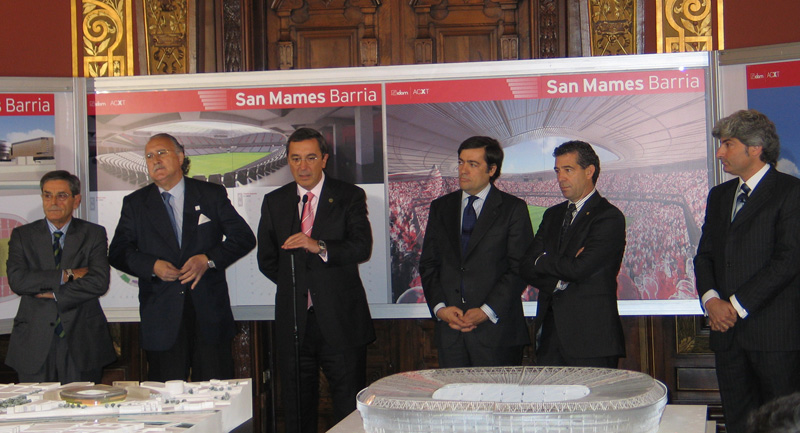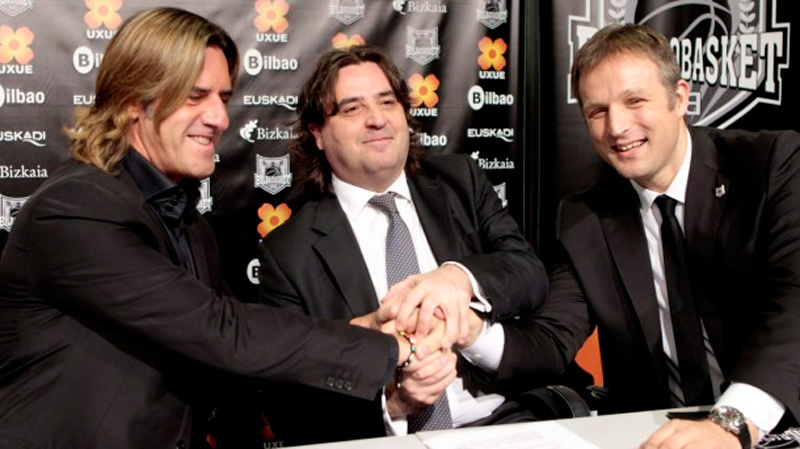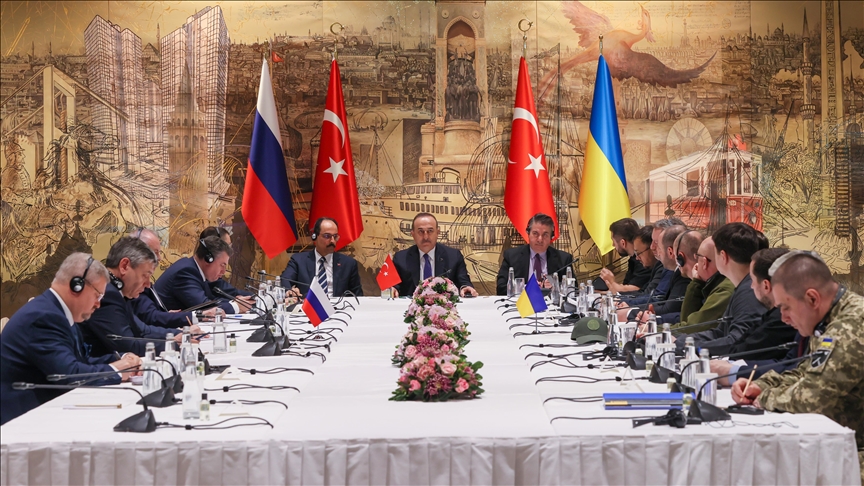The Basque institutions, more than fellow travellers
- Many say that the link between professional sport and administration was closer at a time not so far away, that since the crisis society and the political class are not prepared to accept any investment, because there are more important priorities. They say that the years of bonanza have passed. It is possible, but the relationship remains in force, although it is manifested with a lower intensity. State aid comes in different ways: direct payments (sponsorships, one-off institutional campaigns or infrastructure financing), tax advantages, use of public facilities (almost) derisory rents for exclusive use, real estate speculation, etc. Also in the Basque Country. “Do not demagogy,” you will hear if you doubt the appropriateness of the aid. It is true that it is a complicated subject, with a thousand branches, and that it cannot be simplified, but if there is something to be discussed. In Larrun, we have tried not to link ourselves numerically and contextualize the data, taking advantage, among other things, of the explanations and opinions of representatives of Athletic Club and of the Diputación de Bizkaia, Ibai Trebiño of the hintxa group Indar Baskonia and Maite Fuentes, dean of the Faculty of Sciences of Physical Activity and Sport of the UPHU.

In 1992, the Tour de France departed from San Sebastian. Until then it had never left a city in the Spanish state, and in 25 years the same has not happened again. That year the Universal Expo was held in Seville, Madrid was the Capital of European Culture, Barcelona organized the Olympic Games and, without neglecting cycling, the World Championship in Benidorm and the Grand Prix of the Nations in Mallorca were played. The Tour de France was brought to Gipuzkoa in times of splendor in the pockets of the institutions, after having paid 300 million pesetas.
The current director of the Tour, Christian Prudhomme, was last September in Bilbao, coinciding with the end of a stage of the Tour to Spain, with the objective of meeting with representatives of the City Hall and the Council, who have announced their intention to bring the Tour to the Biscay capital in the near future. The Consistory has paid 120,000 euros for the Vuelta stage, which could cost 100,000 (if the stage is the beginning) or 600,000 (if the goal is the goal), approximately, for the giant caravan of the Tour, plus the costs of security, lighting or maintenance. On the other side of the scale, the argument most used by the authorities, the promotion of the city – through images taken from the helicopter – and the money that would leave the race, especially in the hospitality sector (Source: Expansion).
The “punishment” of the European Commission for Athletic and Health
The New San Mamés de Bilbao was inaugurated in 2013. Athletic has invested a total of EUR 186 million in the construction of the football field, 43 of which have been awarded. The Provincial Council of Bizkaia, the Basque Government and the Caja Laboral have processed a total of EUR 11 million for the City of Bilbao.
A complaint received three years ago led the European Union (EU) to consider whether the participation of the City Council, the Council and the Basque Government in financing the new football field could be interpreted as State aid to Athletic. It says no, because one has to take into account, among other things, the fees and benefits that have been applied to the club, the public use that will be given to the stadium and the new facilities that will be built.
On the contrary, Brussels has asked Athletic and Osasuna, as well as Madrid and Barcelona, to return a maximum of EUR 5 million to the Treasury, as part of the public aid granted by the State is illegal. Europe says that the tax privileges that these clubs have received "violate" the principles of competitiveness and "benefit" other clubs to the detriment of the previous ones. The point is that, by their special nature, they have been treated as non-profit entities, when all the other professional football teams in Spain are sports anonymous companies (SAD). In other words, corporate tax has been paid 5% less: 25% of respondents and the remaining 30%. “Using taxpayers’ money to fund professional football teams can distort tournaments,” explains European Competition Commissioner Margrethe Vestager: “Public funds cannot be used to favour certain groups, as has happened in this case.” Real Madrid, for its part, will have to repay an additional EUR 18 million to the City Hall of San Sebastian due to the increase in the land that it sold to the club.
It is precisely in order to adapt to the decision of the European Commission that the Bizkaia General Meetings adopted on 14 December, with the approval of all the groups, a foral rule to modify the tax treatment of professional sports teams. Once the rule has been ratified by the plenary, professional clubs receive the same treatment as public limited companies. It remains to be seen, however, whether the change is going to mean that Athletic has to give back the money (difference of 5%) or not. In the event of a refund, you must return the accumulated savings since 2012, as the following have been prescribed.
The two cases, the first in the field of cycling and the second in the world of football, show that despite the end of the good times, the relationship between administrations and professional sport is maintained. Since 2007, moreover, due to the economic crisis, the debate on the adequacy of aid and legality in some cases is more lively than before. In Larruna we have focused mainly on the reality of Álava, Bizkaia and Gipuzkoa, focusing on football and male basketball as clearer examples of the complexity of public subsidies.
San Mamés Barria, “strategic” work
Collecting concrete data on public aid received by professional sports teams is not easy, among other reasons because it is part of their policy not to over-ventilate the economic situation, and because the confidentiality law prohibits reporting on taxpayers, as we have been told from the press offices of the football team Athletic and the Provincial Council of Bizkaia. In any case, approximate figures can be given.
The budget for San Mamés Barria is EUR 186 million. Among the 43 million contributed by Athletic, BBK (Kutxabank), the Basque Government and the Provincial Council of Bizkaia (17 of them for the value of the land where the new field is located) and 11 million by the City Hall (without the necessary licenses). The extension of the roof (EUR 12.6 million) has been fully taken over by the Club of the Basque capital. For the annual rent EUR 500,000 is charged to the football team and the maintenance and security costs are borne by them. San Mamés Barria S.L. the company owns the stadium, an entity made up of the five entities that financed it.
Below the market value, Ruarrizaga or UPyD asked the Finance Deputy, José María Iruarrizaga, about the rental price, for example. In his view, this is a reasonable figure, taking into account that the Provincial Council of Bizkaia can organise two events a year and that it has the right to use the palco and the parking lot or to advertise institutionally. “It is a strategic work, important for the promotion of the territory,” they explain to us from the Council.
Iruarrizaga explained in his hearing at the Bizkaia General Meetings on 28 September that the value of all these benefits amounts to EUR 1.5 million. At the time, I said, it was the Basque Court of Public Accounts (TVCP) that decided on the legitimacy of the operation that corresponded to it and that the opposition had been mized in part by the president of that institution, José Luis Bilbao, MP of Bizkaia at the time of the operation of the new football field. In any event, neither Europe nor the Court of Auditors have seen any reason to change the rental conditions. “In the opinion of the Tribunal, the company San Mamés Barria, apart from the breaches detected in two or three files, has correctly complied with the legal regulations governing economic and financial activity in the years 2007 to 2014,” can be read in the TVCP Control Report. The agreement states that, after the lease for 50 years, Athletic will be able to buy the football field for 66 million euros.Los representatives from Huay-Ahal
dugu and UPyD have denounced that this sale price is a “chollo”, that the club has been “favourably treated” and that San Mamés Barria and the Court of Auditors are not acting. In this sense, the club has recalled that among the football teams of the Spanish state Athletic pays the highest rent, with a notable difference compared to the latter. The Real Sociedad, for example, paid in its day only 500 million pesetas (3 million euros) for the use of Anoeta for 40 years.
Withdrawal of athletics tracks, an ancestral desire
The Anoeta stadium was opened in 1993. Its construction and renovation amounted to EUR 48 million. Of this amount, 85% corresponded to public institutions: The City Hall has 18 million, the Basque Government 13, the Council of Gipuzkoa just over 10, the Higher Council of Sports (CSD) 3.6 and the Real Sociedad only 3 million. The facilities are managed by the City Hall through the company Anoeta Kiroldegia.
The athletics tracks surrounding the camp almost since the opening day have been a source of controversy and, seeing that for years they have hardly been used, a request for withdrawal from the area for the corridors has been made from some sectors, as according to them, bringing the stands closer to the playing field, the atmosphere of the old Atotxa would recover. But either because of the outbreak of the crisis or because the institutions were looking at San Mamés Barria, as many media have interpreted, the project has not been able to get through until the Real announced that most of the reform works would cost the club.
The new Anoeta, which will have no track of athletics, will open in 2019, if the most optimistic forecasts are met. The budget for works amounts to EUR 51 million. Without knowing exactly what the figures of the pre-agreement reached last day 14 with Kutxabank are, the Real Sociedad will put 50% – live – and the other half Anoeta Kiroldegia. In this sense, the club will allocate EUR 12 million more to the City Hall of Donostia-San Sebastián, as a fee for the use and exploitation of Anoeta. The Basque Government will contribute EUR 10 million and the Member will contribute EUR 4 million. In return, the period of operation of the stadium will be extended to the Real Sociedad between 2033 and 2067. Four of the five municipal groups (PNV, PSE, Bildu and pp) were in favour of the project, while one (Irabazi) voted against.
.jpg)
On 11 October, Eneko Goia, mayor of San Sebastian and president of the society Anoeta Kiroldegia, announced the cessation of Loïc Alejandro, representative of Irabazi on the board of directors of the society, “for opposing the remodeling of the stadium and for having harmed his activity to the Sports Club of Anoeta”. The reason for this is that Irabazi's appeal to the Administrative Body for Contractual Remedies of the Basque Government (RLC), which was partially accepted, has forced to amend the specifications and has delayed the work. Alejandro's impeachment has been supported by the PNV and the PSE; EH Bildu has denounced the "caciquism of the mayor" and has described it as "quite hard" for pp.
Of the 51 million euros that the project will cost, 44 will go to Anoeta, almost 3 million to the mini-stadium, 800,000 to the Etxea Kirol, 500,000 to Ernest Lluch and 180,000 to the headquarters of the Guipuzkoan Federation.
Complaint against Markel Olano
On March 16, the 5th edition of the Feria de San Sebastián was held. The Court of Inquiry of Gipuzkoa admitted to the proceedings the complaint lodged by the former president of the Royal Society Iñaki Badiola against the deputy general of Gipuzkoa Markel Olano. The judge has seen signs of "counterfeiting and prevarication", as a debt of EUR 6.4 million was written off to the team in 2009 and, in addition, he granted EUR 6 million in aid. The Basque Court of Public Accounts published a report in February 2012 in which public debt was written off. The council of the Real Sociedad clarified at the time that the debt was written off “in the terms provided for by law”: “According to a 1982 criterion, part of the members’ payments are not subject to VAT”. The club clarifies that since 2009 the problems with the Treasury have already been solved. (Source: CLARO)
Alavés and Eibar: Free rental
As in the case of Anoeta, the City Hall also has the football fields of Ipurua in Eibar and Mendizorrotza in Vitoria-Gasteiz. On the contrary, the Eibar and Alavés do not pay rent. The cost of the enlargement of Ipurua, EUR 3.2 million, has been almost entirely borne by Eibar, while the Gipuzkoa Parliament has contributed 10% (EUR 320,000).
On the other hand, the case of Osasuna, which has been wandering through the mud for a long time, is more peculiar. The El Sadar stadium, which has received another official name in public aid, and the Tajonar facilities were handed over to the Treasury in 2014 to pay a significant part of the debt of 53 million euros (43 million) and for rent will pay only 150,000 euros a year in the next 30 years (75,000 if it returns to level 2). It is not surprising, therefore, that Osasuna President Luis Sabascene says that the club has no need to recover Sadar and Tajonar: “Maybe it’s better to have money in the bank than to invest in bricks. We have a contract for 30 years; by then I will no longer live,” he said. Consideration should also be given to the rescheduling caused by the appraisal of the facilities, since at first the Finance Technicians calculated that they had a value of 30.5 million and not 43 million.
Also public are the pavilions where the basketball teams Bilbao Basket and Baskonia play. The sports club of Miribilla and the Diputación de Álava are owned by the City Council of Bilbao and the Buesa Arena. Clubs are in charge of maintaining the facilities in perfect condition. According to data provided by the Baskonia Group, between 2008 and 2013 Buesa Arena and Mendizorroza paid EUR 3,670,000 for water, electricity and maintenance supplies.
Bilbao Basket. In the center of the whirlwind
The Miribilla Sports Club, known as the Bilbao Arena, was inaugurated in 2010 (the Bilbao Basket, which previously played in BEC). An invoice of EUR 38 million each was paid equally by the City Council and the Council.
With businessman Gorka Arrinda, principal shareholder of the club, before and now without it, the relationship that the Bilbao Basket has maintained with the institutions has been much more present in recent years. The 2012-2014 period was especially retracted, and players also started the strike for not having paid salaries. The Diputación de Bizkaia had already decided to withdraw the aid to professional sports clubs (the Bilbao Basket received EUR 1.9 million), but because the private sponsor (the energy company Uxue) did not pay a euro of the corresponding amount, decided to rescue the club in 2013, earmarking EUR 5.2 million. The debt to the Treasury of EUR 3.7 million was written off to the group. The institution had signed an agreement with the Bilbao Basket to provide EUR 5.7 million (1.9 million per year) in the period 2014-2016. The contract was suspended and the money was pre-empted. “Once the debt has been paid and the agreement has been cancelled for 2016, there is no contractual relationship with the Bilbao Basket from now on,” said General Deputy José Luis Bilbao: “It has brought the salvation of the group, but it is now up to the managers to make a feasibility plan, without the support of the Deputy.”

According to the Deputy General, they decided to rescue the club bilbaíno in the first phase of the 2014 World Cup, as it was essential that the team not disappear so that the U.S. team would play at BEC and not lose the economic impact. However, the representatives of EH Bildu provided another information: According to the agreement signed between the City Council, the Basque Government and the Council of Ministers with the Spanish Basketball Federation, to bring the American team to BEC it was enough for the institutions to pay 700,000 euros (in addition to the 1.8 million already paid by Bilbao for being one of the headquarters of the World Cup). (Source: Naiz.info
>>> The World Basketball Championship leaves €35 million in Bilbao and Bizkaia (Graphic Data)
The decision gave rise to some controversy, as it took place in a very special context. Thus, in the foral budgets approved on 22 December 2012, resources for Special Aid for Social Inclusion were reduced by 80%. In 2011, EUR 3,615,000 have been earmarked, while in 2012 EUR 737,000 have been earmarked. (Source: El País)
Debt deferral and repayment
Over time, the situation of the basketball team has not been solved. On 30 December 2015, the Deputy approved the three-year deferral of a debt of EUR 6.5 million (3.1 million) to the Treasury, thanks to the endorsement of the lead sponsor, Dominion.
And in June 2016, headlines appeared again as “The Administration has rescued the group.” The club ignored the ACB League's creditor competition, obtaining a credit line of EUR 1 million. The management has already announced that if it did not find a way to deal with the debt of EUR 2.7 million it would have to suspend payments, and if Caja Rural had granted it the credit line, it was because of the effort made by the City Council of Bilbao, which deposited the guarantee of EUR 1 million that requested the operation. The City renewed the partnership agreement with the Bilbao Basket year after year, but the situation forced it to accept a five-year subsidy: EUR 200,000 per year between 2017 and 2021. The Mayor of Bilbao, Juan María Aburto, stated that if they did not receive this help the group would disappear: “The Bilbao Basket is not a company declared insolvent or failed, but a club with treasury problems.” PSE and pp supported the agreement, EH Bildu and Udalberri voted against and Ganus-Goazen Bilbao abstained. “In order to receive this help, the only thing the team is asked to do is to play games, it’s nothing wrong,” said EH spokesman Bildu, Lander Etxeberria. “Although the club brings added value to the city, it is still a private company to manage privately,” added Francisco Samir Lahdou of Ganús -Goazen Bilbao.
The debt management model has also generated debate in Álava, particularly as regards basketball Baskonia.
Baskonia: Favourable conditions
The Deputy, chaired by Javier de Andrés (pp), approved on 30 December 2014 a “special payment plan” to deal with the debt of EUR 7.5 million to the Treasury. “The Alavesa Hacienda rescued Saski Baskonia,” read in the article published on August 9, 2016. Agreement 725/2014 extends the deadline for dealing with debt until 2020. “This agreement improves the ‘special’ plans signed since 1995,” said journalist Iker Rioja. Two days later, on 11 August, the Baskonia published the text written in Basque. He assured that his debts in 2014 did not reach EUR 7.5 million, although he acknowledged that he had negotiated a new payment schedule for debt arrears.
The Official Bulletin of Álava of 30 December 2014 reads: “Agreement 725/2014 of the Council of Deputies approving the company Saski-Baskonia SAD a special payment plan for the settlement of various outstanding tax debts with the Hacienda Foral de Álava”. And the other, the 2014 audit reports submitted by the Basque Court of Public Accounts (page 15): “Under Agreement 725/2014 of the Council of Deputies, a debtor has been granted a split over the principal of EUR 7.5 million, of which EUR 5.1 million corresponds to prepaid and fractionated debts, for a period of 5 years, exceeding the deadline set in the regulation.” Therefore, it cannot be said that the data provided by Eldiario.es is very wrong.
Moreover, according to the SER chain, the government of Deputy General Ramiro González (PNV), also "rescued" Baskonia in December 2015, after reiterating its request to defer and split the debt of EUR 6.5 million with Hacienda. The new plan consists of two branches: on the one hand, it divides payments into 5 years; on the other hand, the public money received by Baskonia would serve to pay part of the debt. That is, in this case, EUR 1.3 million allocated by the Member in advertising terms would not be received by Baskonia, but would be transferred directly from the Department of Culture and Sport to the Treasury.
According to financial sources, this does not mean that the debt to Baskonia is “excused”, as the consideration already exists: Advertising of Álava in the Buesa Arena Pavilion and equipment of the group. The club also says that no one has forgiven him anything, even though agreement 725/2014 in its motto says “settling debts”. The business group led by Josean Querejeta, which includes Alaveses and the sports city of BAKH, has stated that Baskonia has never ceased to pay Hacienda and that it returns more to society than it receives. According to reports, the Baskonia Group will repay EUR 27 million between VAT, IRPF and Social Security in 2017, among others. General Member Ramiro González, in an interview given to the newspaper El Mundo, assured that “sports limited companies do not enjoy privileges; facilities must be given to all companies in a difficult situation, deferring or dividing payments”.
Not only the Diputación, but also the City of Vitoria-Gasteiz, either directly, either through the 5+11 Foundation that includes the football team Alavés or through the sports city BAKH. The Basque Government, on the other hand, has not renewed part of the sponsorship agreement (some EUR 200,000 for international competitions) because the entities debiting the Treasury or Social Security do not have the right to public aid, according to a resolution published in the Official State Gazette. (Source: Alava News)
The hunger for major events still today
We started the report by referring to cycling issues, and we will. In fact, the amateur cycling group Infisport-ArabaEus will disappear in 2017, due to cuts in public aid and insufficient private support has not been found. As of 2014, the group had the collaboration of the Basque Government, the Council of Álava and the City Hall of Vitoria-Gasteiz. It's not the only one. The historic Seguros Bilbao recently announced the same, and EDP has announced that it is no longer sponsoring the Euskadi Foundation.
In the meantime, let us remember that Spain has hosted the European Football Championship or the Olympic Games, without losing its desire to organise large-scale events. In this context the following news about the Mediterranean Games to be held in Tarragona in 2017 is framed: The City Hall is considering making facilities management available to a private company until 2057. “The business model is clear,” says Cycle 2005 blogger Sergio, who has written extensively and extensively about public aid. “The two-week holiday – which hardly has an echo – is paid with everyone’s money, and the facilities that have been built outside the most urgent needs are left in the hands of private companies in exchange for ridiculous fees. Ten years of crisis have passed and the business scheme is continuing: we call for sporting events to be organised as a philosophical stone characterised by propaganda, friendliness and corruption. Much of the cases of corruption that have occurred in Spain are related to the sport industry linked to major events”. It cannot be said that this is the case in our country, but those words should give us some thought.
The whore’s monologue in the madhouse
- The author(s): Franca Rame and Dario Fo.
- From the translator: Assisted by Xabi Martinez De Lezea.
- The actor is: Assisted by Laura Penagos.
- When: April 12th.
- In which: At the Atxulondo Cultural Center in... [+]





















